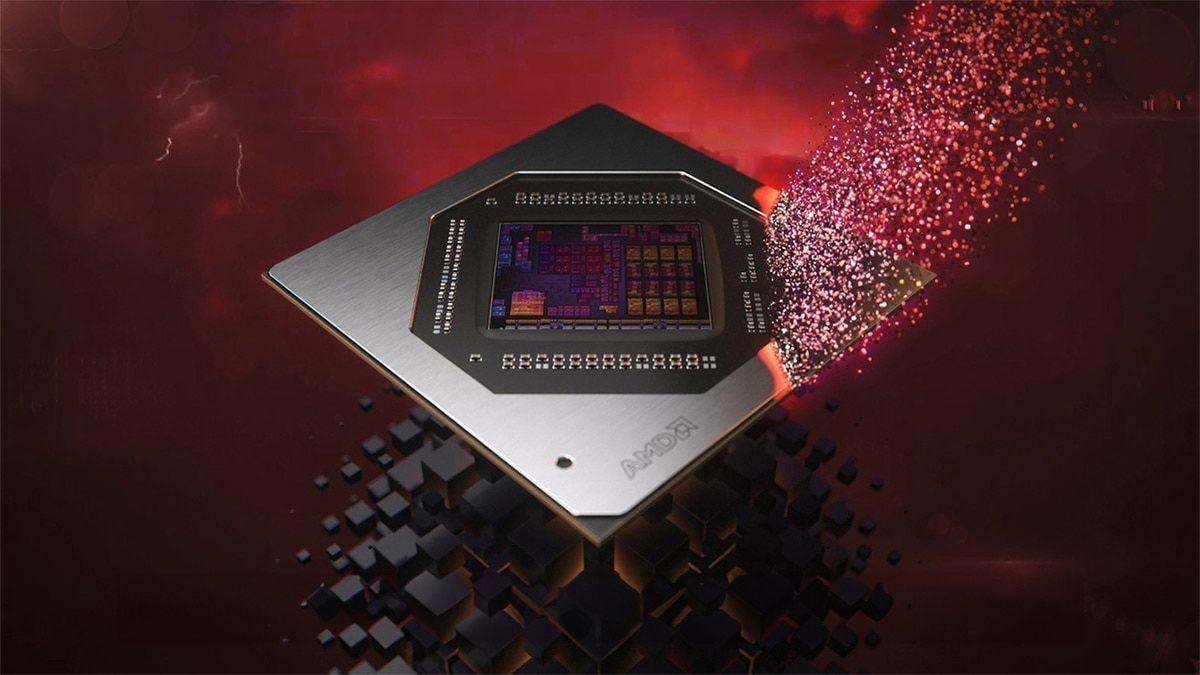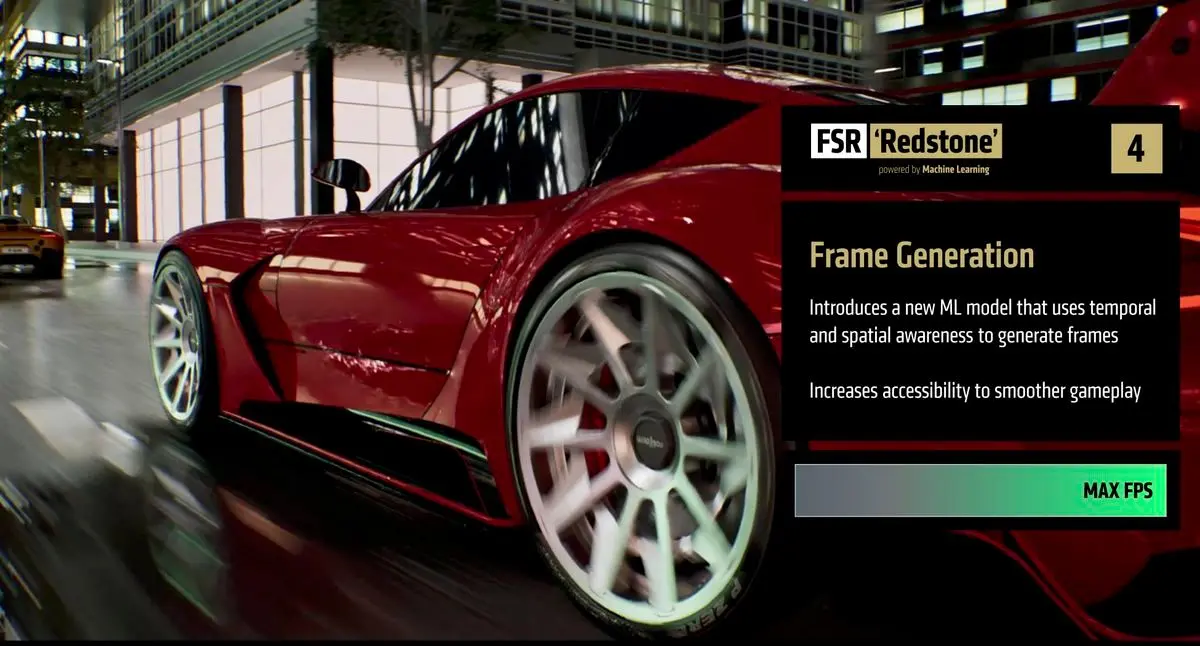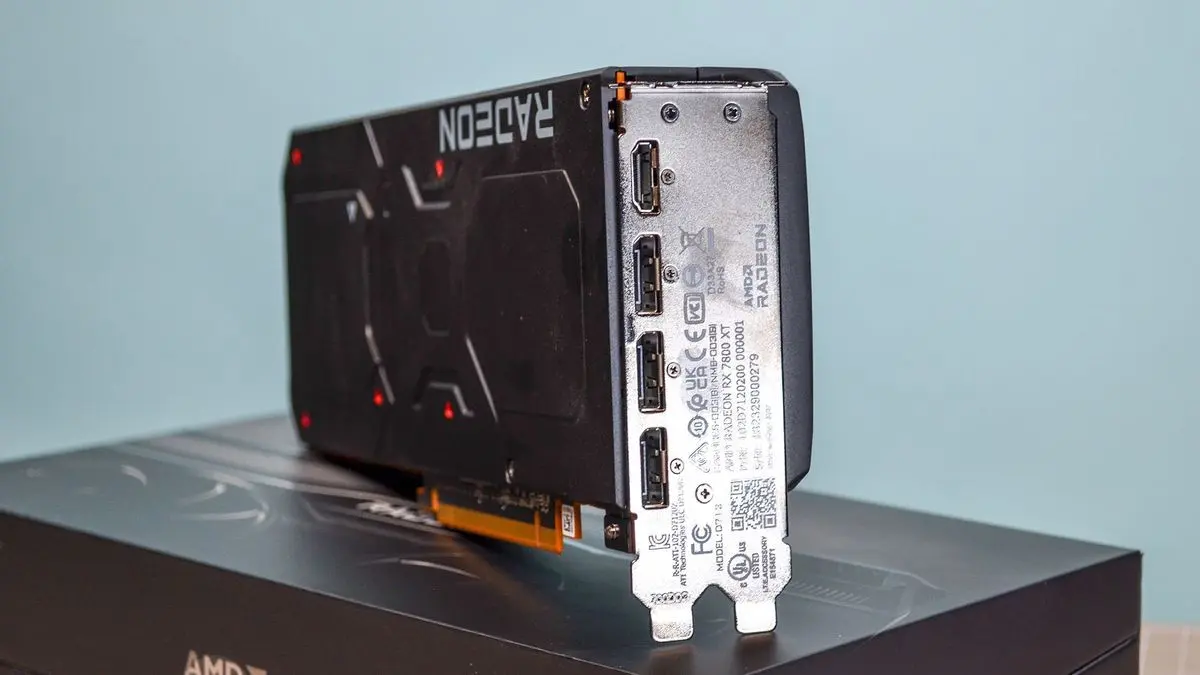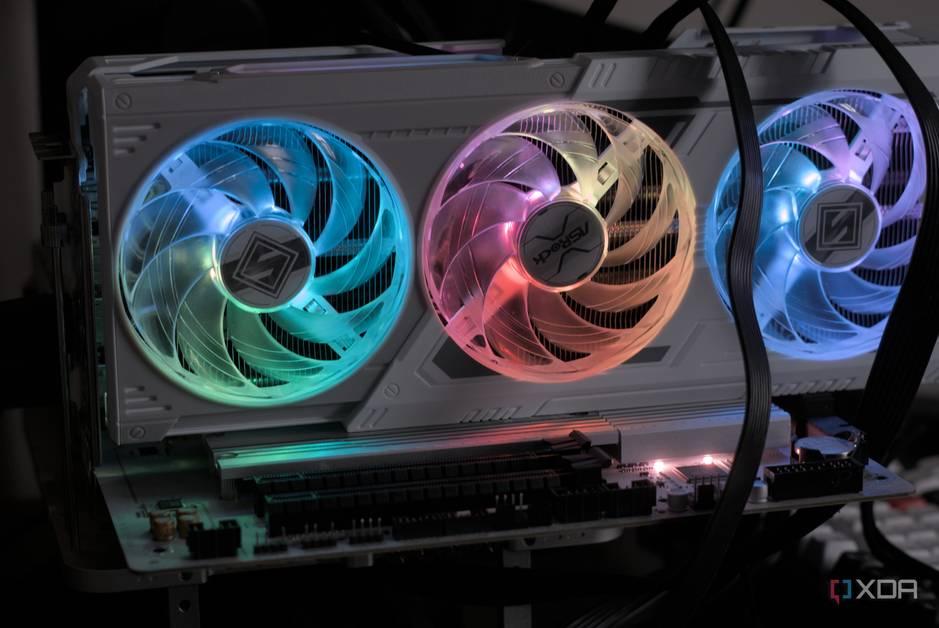AMD's Fluid Motion Frames 3 and 'Redstone' Update: A Leap Forward in AI-Powered GPU Technology
2 Sources
2 Sources
[1]
AMD Fluid Motion Frames 3 spotted in the upcoming AMD Adrenalin 25.20 driver branch -- could lean on AI model used in FSR 4
AFMF 3 is likely a component that will be part of FSR Redstone when it releases AMD is quietly working on a new version of Fluid Motion Frames, just a year after AFMF 2 was released. Two Guru3D forum posters discovered developer notes in the upcoming AMD Adrenalin 25.20 driver branch that mention AFMF 3 support. The latest AMD beta driver out today is 25.9.2, so we could see this new driver very soon. The discovery was made from a "Windows Preview Edition" of the driver that came out on the 24th. The driver is focused on AI and features a plethora of AI-focused updates, including Python 3.12 support and PyTorch on Windows Preview, to improve LLM functionality on supported RX 9000, RX 7000 series GPUs, and Ryzen AI 9/Max APUs in Windows 11. Despite being focused on AI, the driver is apparently also been prepped for AFMF 3 as previously stated. Whether it will come with 25.20 specifically remains to be seen, as one of the two Guru3D forum posters stated the Adrenalin control panel for the 25.20 preview driver does not claim AFMF 3 support. It was only through exporting the driver's game profiles through the AMD GPU profile manager that the feature was revealed. Worst-case scenario, we might see this update in a driver release in a newer version of the 25.xx driver branch, beyond 25.20, potentially debuting with FSR Redstone. There are no official details on what changes AFMF 3 will have, but it is very likely that AMD will upgrade AFMF to the same AI model used for FSR 4. AFMF 2.1 already takes advantage of "AI-optimized" enhancements, but it's likely that these optimizations are part of an older implementation that is not up to the same quality as FSR 4's ML algorithm. There is also some pressure on AMD to improve AFMF, since Nvidia recently introduced Smooth Motion to the RTX 40 series. The only disadvantage with this change (if it goes through) is that FSR 4 will only work on the RX 9000 GPUs exclusively, just like FSR 4. The machine learning model AMD is using reportedly only runs performantly on RDNA 4, thanks to the architecture's numerous AI-enhancements over RDNA 3. Technically, there is evidence of FSR 4 models tuned for RDNA 3, but these models have not been officially released, and AMD has not announced any attempts to make FSR 4 work on older GPUs (not yet anyway). As a reminder, AFMF is the driver-based version of AMD's FSR frame generation that can be toggled on and off in the Adrenalin control panel. The tech is designed for games that don't support FSR frame generation, and provides frame generation to those titles. However, since AFMF works at the driver level, its frame generation quality is notably worse than FSR's, especially surrounding UI elements.
[2]
AMD's next-gen 'Redstone' AI upscaling tech looks imminent - and a big clue has been spotted in the latest drivers
Redstone could finally see FSR 4 backported to older RDNA 3 GPUs AMD is going for gold this generation with its Radeon RX 9000 series GPUs placed among the best GPUs on the market, as the new 'Redstone' AI upscaling update to improve in-game frame generation, ray tracing beckons. Fortunately, it looks like, based on a crucial discovery, the overhaul may be closer than anticipated. As reported by VideoCardz, AMD's AFMF 3 (AMD Fluid Motion Frames) was spotted in driver files, as picked up by a user in Guru3D forums, indicating that the driver-level frame generation tool will arrive via the next 25.20 Adrenalin driver update - notably, this could come included in the long-awaited 'Redstone' update. Redstone seeks to improve both in-game ML (Machine Learning) frame generation and ray tracing for Radeon RX 9000 series RDNA 4 GPUs. This also includes upgrades to FSR 4's super resolution for better image quality while maintaining great frame rates when upscaling. If recent speculation is spot on, we could very well see Redstone arrive with AFMF 3 packaged in a new driver update (which will likely be available for RDNA 4 and older GPUs), and most importantly, the potential backport of FSR 4 to RDNA 3.5 GPUs. It's not far-fetched to suggest that this could be accurate, as Team Red's recent mistake of briefly making FSR 4 open-source has allowed modders to use FSR 4 on older AMD hardware, and hints that AMD may indeed be working on a backport in time for Redstone's release. Either way, AFMF 3 could bring some required improvements from AFMF 2.1, specifically in diminishing the impact of ghosting and input lag, and fiercely competing with Nvidia's equivalent, Smooth Motion. While I primarily use Nvidia's hardware on my desktop gaming PC, both my Lenovo Legion Go S and Asus ROG Ally are powered by AMD's Z1 Extreme, and many users including myself, have been awaiting news on FSR 4, potentially finding its way onto the RDNA 3 Radeon 780M iGPU - and this Redstone update seems like the ideal time for that. Again, I don't want to sound like a broken record, but Nvidia's DLSS 4 is still the better option over FSR 4 thanks to its greater image quality, ray tracing, and Frame Generation (including Multi Frame Generation), and DLSS 4 (super resolution) is available on all RTX GPUs. Redstone needs to be the update that closes that gap between DLSS 4 and FSR 4, so that the latter is at least available to a wider range of AMD hardware users, and not just RDNA 4 GPUs. While FSR 4 is technically available to use on older hardware via Optiscaler, an official implementation from AMD will alleviate any concerns with tinkering and workarounds for functionality. Let's hope we don't have to wait too long.
Share
Share
Copy Link
AMD is preparing to release Fluid Motion Frames 3 and the 'Redstone' update, potentially bringing significant improvements to frame generation and AI upscaling technology for its GPUs.

AMD's Next-Gen AI Upscaling Technology on the Horizon
AMD is poised to make significant strides in GPU technology with the upcoming release of Fluid Motion Frames 3 (AFMF 3) and the 'Redstone' update. These advancements are expected to bring substantial improvements to frame generation and AI upscaling capabilities for AMD's graphics cards.
Fluid Motion Frames 3: A Glimpse into the Future
Recent discoveries in AMD's driver files have revealed the presence of AFMF 3, suggesting that this new technology is on the verge of release. AFMF 3 was spotted in the upcoming AMD Adrenalin 25.20 driver branch, indicating its imminent arrival
1
.While specific details about AFMF 3 remain undisclosed, it is speculated that this update will leverage the same AI model used in FSR 4 (FidelityFX Super Resolution). This integration could potentially lead to significant improvements in frame generation quality, particularly in addressing issues such as ghosting and input lag
2
.The 'Redstone' Update: Enhancing AI Capabilities
Alongside AFMF 3, AMD is preparing to launch the 'Redstone' update, which aims to enhance both in-game machine learning frame generation and ray tracing for the Radeon RX 9000 series GPUs. This update is expected to bring improvements to FSR 4's super resolution technology, potentially offering better image quality while maintaining high frame rates during upscaling
2
.Related Stories
Compatibility and Potential Backporting
One of the key questions surrounding these updates is their compatibility with older AMD GPUs. While FSR 4 was initially designed to work exclusively on RX 9000 GPUs due to their enhanced AI capabilities, there is speculation about potential backporting to RDNA 3 architecture
1
.A recent incident where FSR 4 was briefly made open-source has allowed modders to use the technology on older AMD hardware, hinting at the possibility of official support for RDNA 3 GPUs in the future
2
.Competitive Landscape
These advancements come at a crucial time for AMD as they aim to compete with Nvidia's DLSS 4 technology. While Nvidia currently holds an edge in image quality, ray tracing, and frame generation capabilities, AMD's upcoming updates could potentially narrow this gap
2
.As the GPU market continues to evolve, these developments from AMD signify a strong push towards more advanced AI-powered graphics technologies, promising enhanced gaming experiences for users across a wider range of hardware.
References
Summarized by
Navi
[1]
Related Stories
Recent Highlights
1
AI Chatbots Sway Voters More Effectively Than Traditional Political Ads, New Studies Reveal
Science and Research

2
Google AI glasses set to launch in 2026 with Gemini and Android XR across multiple partners
Technology

3
EU Launches Antitrust Probe Into Google's AI Training Practices and Content Usage
Policy and Regulation








